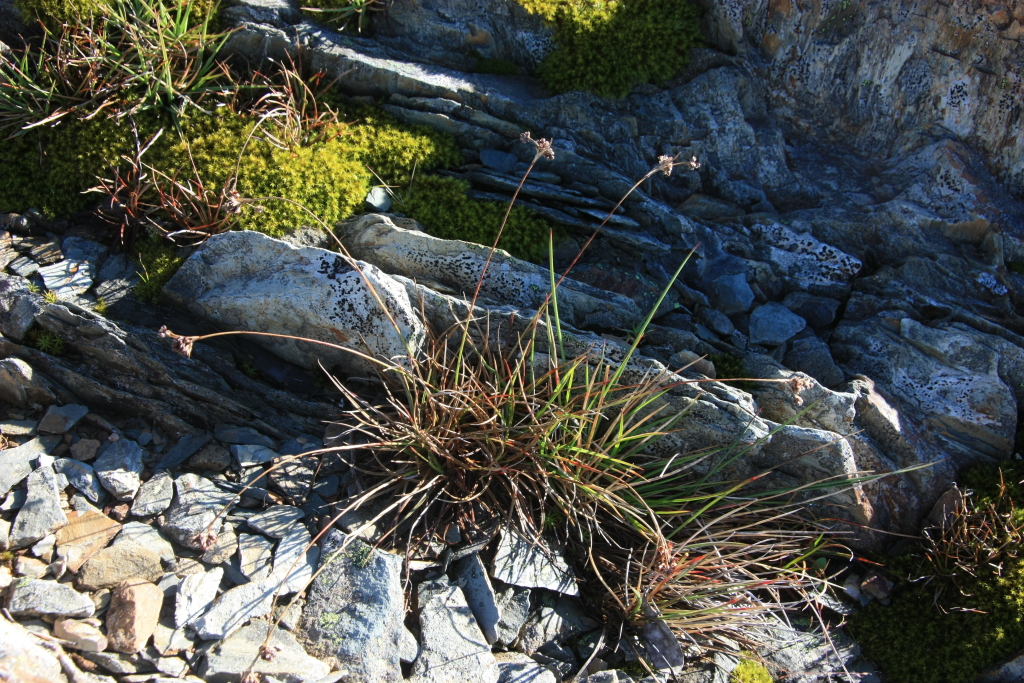Luzula alpestris
Nordensk.Tufted perennial; fibrous leaf remains usually absent; flowering stems erect, usually c. 5–10(–c. 25) cm high, commonly c. twice as long as leaves. Leaves channelled, 1–2 mm wide, rather stiff, margins thickened, pale, virtually glabrous except near base where rather densely ciliate; leaf apices narrow but obtuse, sometimes the leafy floral bracts acute-tipped. Inflorescence a single dense ovate cluster mostly c. 0.7–1 cm long and 0.5–1 cm wide, sometimes broader and slightly lobed in robust specimens; leafy floral bracts commonly widely spreading or deflexed, membranous bracts prominent, imparting a pale overall cast to the inflorescence; tepals acuminate, 2–2.5 mm long, pale to mid-brown (rarely very dark) medially, with rather broad pale margins; anthers c. 0.5 mm long; capsules subequal to tepals, reddish to dark brown; seeds 0.8–1 mm long excluding caruncle which is c. one-eighth as long as seed. Flowers Nov.–Feb.
HNF, VAlp. Also NSW (Snowy Mtns). Apparently mostly confined to the Bogong High Plains, with outlying occurrences on the Dargo High Plains, but possibly more widespread on the higher alps and overlooked. Occurs chiefly as a colonizer of bare soil, particularly at the margins of bogs and soaks and in shallow depressions, but an occasional component of grassland and heath communities.
Walsh, N.G. (1994). Luzula. In: Walsh, N.G.; Entwisle, T.J., Flora of Victoria Vol. 2, Ferns and Allied Plants, Conifers and Monocotyledons, pp. 233–238. Inkata Press, Melbourne.
 Spinning
Spinning
